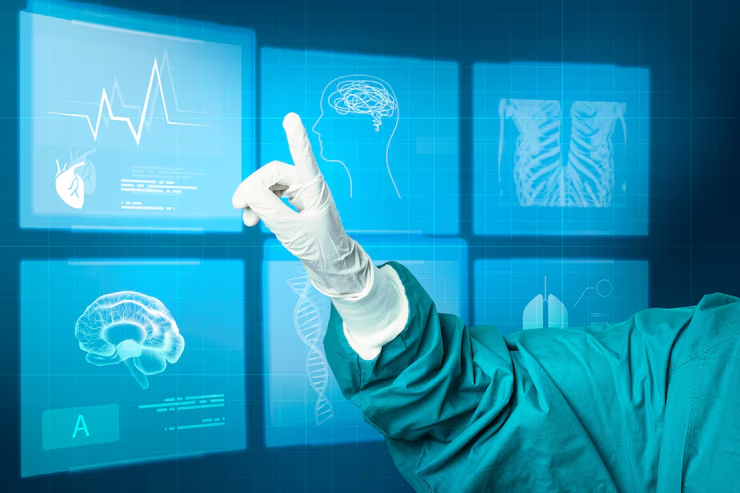How proactive scans are shifting the healthcare conversation from treatment to prevention.
What If You Could See Disease Before It Starts?
For decades, healthcare has focused on reaction—waiting for symptoms, diagnosing disease, then treating it. But what if we flipped the script?
What if we could detect disease before symptoms began, long before damage is done?
That’s the promise of preventive imaging—a growing movement that uses cutting-edge technology like MRI and PET scans to uncover health issues early, optimize performance, and personalize care long before anything goes wrong.
Welcome to the new wave of health optimization, where medical imaging isn’t just for the sick—it’s for the smart.
What Is Preventive Imaging?
Preventive imaging is the use of advanced scanning tools like Magnetic Resonance Imaging (MRI), Positron Emission Tomography (PET), CT scans, and ultrasound in people who are asymptomatic—meaning they feel healthy and have no obvious problems.
Unlike traditional diagnostics, which respond to symptoms, preventive imaging aims to:
- Detect hidden disease or pre-disease states early
- Establish baseline health data for future comparison
- Identify risks before they become life-threatening
- Support lifestyle, diet, and fitness planning based on real metrics
In short, it’s precision health for proactive people.
Why Imaging Is Leading the Preventive Health Movement
Lab work can only go so far. Physical exams can miss subtle signs. But imaging can see inside your body in ways no other tool can.
Examples:
- MRI can detect soft tissue abnormalities, early cancers, aneurysms, and brain atrophy—years before they cause symptoms.
- PET scans can identify abnormal cellular metabolism, often catching cancer, Alzheimer’s, or heart disease at their earliest metabolic stages.
- Ultrasound can reveal vascular blockages, liver fat, or thyroid nodules that may go unnoticed in bloodwork.
- CT scans can measure coronary calcium scores, giving precise risk metrics for heart attack.
This level of insight isn’t just for elite athletes or executives—it’s increasingly available to anyone who values their long-term health.
What Preventive Imaging Can Reveal (Even If You Feel Fine)
Even among people who feel healthy, advanced scans can detect:
- Early-stage cancers (thyroid, kidney, prostate, breast, colon)
- Brain changes linked to Alzheimer’s and other dementias
- Heart abnormalities and hidden coronary artery disease
- Aneurysms or vascular malformations
- Silent tumors or cysts
- Fatty liver or organ inflammation
- Degenerative disc or joint changes
- Thyroid or adrenal nodules
- Hormonal imbalances through imaging of glands
For many patients, this information helps prevent a health crisis years before symptoms would have triggered testing.
Who Should Consider Preventive Imaging?
Preventive imaging is especially useful for people in one or more of these categories:
1. Those with a family history of chronic illness
If multiple relatives have had cancer, heart disease, or neurological conditions, you may benefit from early, periodic scans to watch for similar trends in your own health.
2. People over age 40
Age-related changes in the brain, spine, joints, and cardiovascular system often begin quietly. Baseline scans at this age provide reference points for future care.
3. Health-conscious professionals and high-performers
Executives, athletes, pilots, and wellness enthusiasts use advanced imaging as part of preventive maintenance—like checking your engine before a road trip.
4. Cancer survivors or high-risk patients
A person in remission may use MRI or PET scans for surveillance. Those with genetic mutations (like BRCA) may benefit from annual imaging even when asymptomatic.
5. Anyone who wants a deeper understanding of their health
Preventive imaging isn’t just about catching disease. It’s about optimizing energy, focus, fitness, and longevity by knowing what’s happening inside your body.
Types of Preventive Imaging
Here’s what some of the most valuable preventive scans can do:
| Imaging Type | What It Detects Early | Ideal For |
| Whole-Body MRI | Tumors, inflammation, disc degeneration, organ changes | Overall health screening, chronic issues |
| Brain MRI | Aneurysms, stroke risk, atrophy, tumors, early dementia | Memory issues, cognitive decline prevention |
| Cardiac CT | Coronary calcium score, plaque buildup | Heart disease risk assessment |
| PET Brain Scan | Alzheimer’s, Parkinson’s, metabolic brain patterns | Memory, behavior, or family history |
| PET Cancer Screening | Hidden cancers or metabolic activity in the body | Cancer survivors or high-risk individuals |
| Abdominal Ultrasound | Liver fat, gallstones, kidney cysts | Digestive health and organ function |
How Often Should You Do Preventive Scans?
Preventive imaging isn’t meant to be done every few months—it’s about strategic timing. Here’s a guideline:
| Patient Profile | Suggested Imaging Frequency |
| Average healthy adult | Every 3–5 years for full-body MRI |
| Over 50 with no risk factors | Baseline scan every 2–3 years |
| High-risk family history | Every 1–2 years (based on physician advice) |
| Cancer survivor | Annually for 5 years, then personalized |
| Cognitive decline risk | Baseline brain MRI or PET at 50+ |
What Are the Benefits of Preventive Imaging?
- Peace of mind: Know what’s going on inside your body
- Early intervention: Catch disease before symptoms start
- Health optimization: Personalize fitness, nutrition, and wellness
- Data-driven decisions: No guesswork—just facts
- Avoid future healthcare costs: Prevention is far less expensive than late-stage treatment
What About the Downsides?
Like any tool, preventive imaging must be used wisely. Potential considerations include:
- Cost: Not all scans are covered by insurance unless medically indicated
- Incidental findings: Benign or irrelevant abnormalities may lead to extra tests or anxiety
- Radiation: PET and CT scans involve small doses of radiation—MRI and ultrasound do not
- Over-screening: Not every healthy person needs yearly scans—screening should be tailored to your risk
That’s why it’s important to work with an imaging center that takes time to understand your goals, risks, and history before recommending a protocol.
Why Choose PET CT and MRI of Miami for Preventive Imaging?
At PET CT and MRI of Miami, we specialize in proactive, patient-centered imaging. Our facility is equipped with the latest diagnostic technology and a team of compassionate experts who know how to guide your preventive care journey.
Here’s what you can expect:
- Advanced full-body MRI and PET capabilities
- Brain and cardiac screening protocols
- Comfortable, non-clinical environment
- Fast scheduling and same-day availability
- Personalized imaging plans based on your needs
- Full coordination with your primary doctor or specialist
We believe imaging shouldn’t just diagnose disease—it should empower people to live longer, healthier, more informed lives.
Ready to Invest in Your Long-Term Health?
Preventive imaging isn’t about fear—it’s about foresight. You don’t have to wait for something to go wrong before taking a deeper look.
If you’re ready to make proactive imaging part of your health optimization strategy, we’re here to help.📍 PET CT and MRI of Miami
📞 Call (305) 229-2020
🌐 Schedule online at petctofmiami.com




